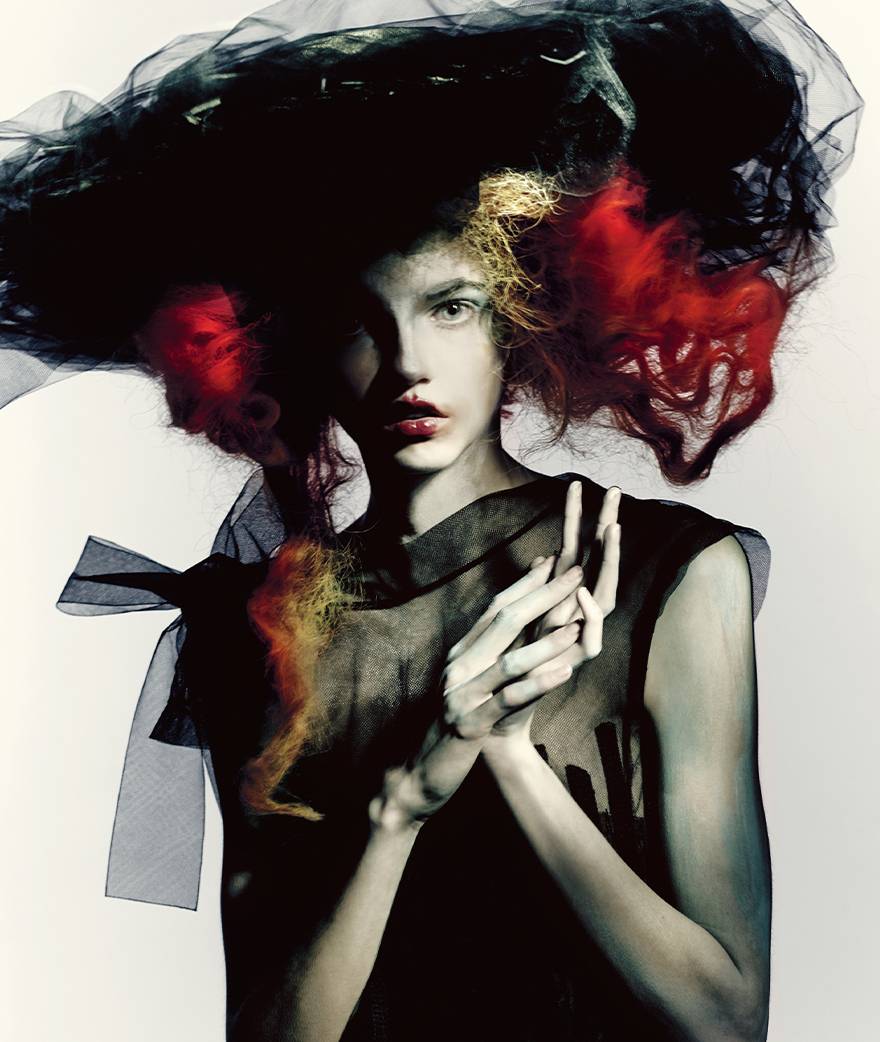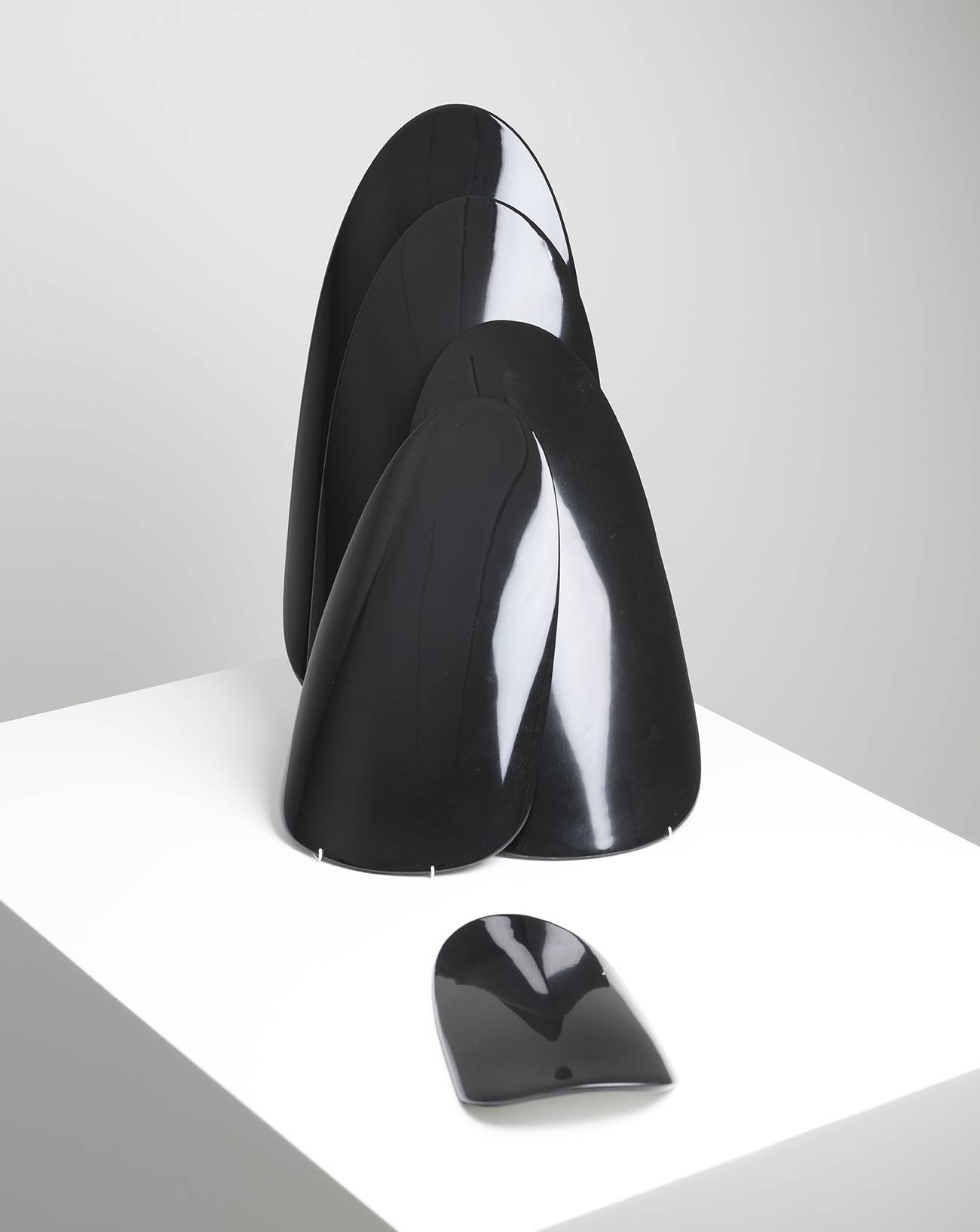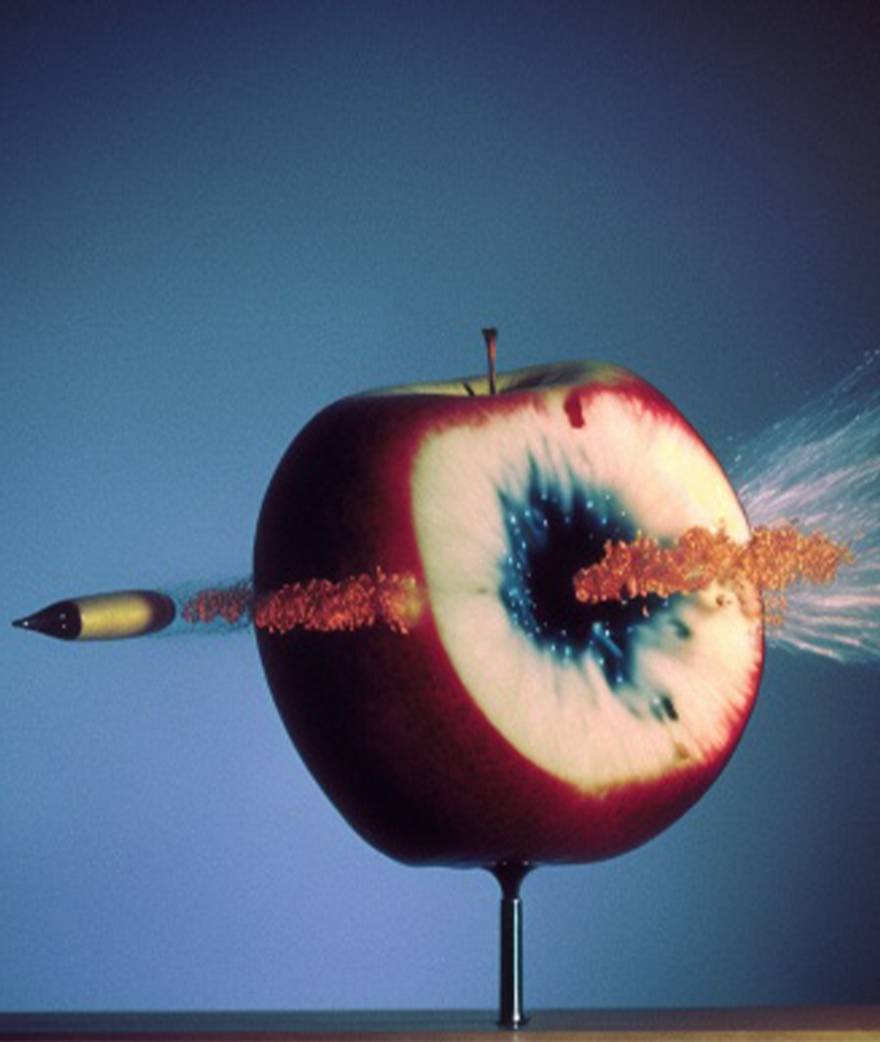

Her 2022 show Speed Limit at New York’s Anton Kern Gallery and her carte blanche last summer at Le Corbusier’s Villa Savoye outside Paris (which came in the wake of a big retrospective at the MACRO in Rome) once more demonstrated the particular quality of her oeuvre and her genius in staging it. Cofounder, in the early 80s, of the design group Memphis, which she perfused with African influences, this naturalized Italian who was born in France, in 1957, has constantly reinvented herself and made audacity the guiding principle of her work, which has primarily been a question of painting. Before finding fame, Nathalie Du Pasquier, today aged 65, heroically traversed changing fashions and aesthetic tendencies with a constant goal: artistic freedom.
Nathalie du Pasquier : an artist thriving on pleasure and new adventures
Her dazzling smile gets you first, then her deep-blue gaze. “I paint for pleasure,” she declares, “not to get myself in the press,” immediately making clear her dislike of inter- views, which she usually avoids. She doesn’t always show up to her openings either, not through false modesty or because she thinks she’s a diva but simply because she doesn’t enjoy them and, most likely, is bored. Indeed boredom, and the paths of conformism, were options she rejected very young: on leaving school at 18 she bade farewell to her art-historian mother and virologist father (“He looked at things really close up in a microscope,” she says), as well as Bordeaux where she had grown up, and sailed to Gabon with a group of friends. “That was when life began,” she recalls. “It never turns out how you imagined it.”
She also travelled to India and Australia, then lived briefly in Rome, before moving to Milan, in 1979, where she found work at the Salone du Mobile on a Tyrolean furniture stand. There, by chance, she ran into the designer Martine Bedin, who she’d been at school with in Bordeaux, and another designer, Georges Sowden, who would become her romantic partner. Sowden had moved from his native England to work with Ettore Sottsass (1917–2007), a designer from another generation who, in 1981, launched a group that sought to upset the apple carts of Modernism and introduce fun, fantasy and colour to Italian furniture design.


Founding Memphis, major design group from the eighties
“I joined the group in a classic way – I was the girlfriend of one of the designers,” she says dryly of the extraordinary Memphis adventure, which had a lasting impact on design and architecture, even if, as she reminds us, the group and its work were “hated by architectural institutions and appealed very little to important people and a lot to Karl Lagerfeld and the fashion world.” Because she drew, she was assigned pattern design for the furniture – which (shocking!) blithely combined marble, laminate and chrome – and the fabrics, and it was therefore she who introduced the signature African motifs and Pop touches that characterize the Memphis style, her homage to cultures that still fascinate her today. The implacable impact of her motifs can clearly be seen in the show of 1980s work currently on view at Paris’s Musée des Arts décoratifs (until 16 April).
In the mid-80s, doubting she was destined for design (“I hadn’t chosen design and let myself get dragged into it. I was annoyed by the character I’d been turned into, the pretty French Memphis girl”), she turned to painting after Memphis fell apart, in 1987. Little by little she invented the forms of her future oeuvre, painting still lifes of everyday objects she found in her studio. “I painted things that were extremely quotidian. What interested me were the relationships between things. I created ‘territories’ on table tops, in a way that has something to do with architecture.” While her compositions bear the meticulous trace of Giorgio Morandi, her colours clearly come from elsewhere. In “My Influences,” published in September 2015, she lists her sources: “Persian miniatures, Ingres, Giotto, Piero della Francesca, Indian temples, Sánchez Cotán, Sottsass, El Lissitzky, Morandi, Giorgio de Chirico and Savinio, French medieval miniatures, Le Corbusier, the form of flowers, the colours of exotic fish, the beauty of the animal world, Japanese prints, Tintin and Milou, and,” she immediately adds, “many other things.”
The artist's understated beginnings into painting
Her painting made no impact in either Italy or France. “No one in the art world was interested in me, and the art world didn’t particularly interest me either,” she recalls, which is no doubt what allowed her to develop her work in her own time, within a space of tranquility and concentration. She was helped by a Hong Kong dealer who, seduced by her paintings in the late 80s, sold them far from the chatter of Paris and Milan. “At the time, Hong Kong was distinctly unfashionable, and his only clients were rich Chinese who appreciated painting for traditional reasons. Hong Kong is a noisy commercial city; people liked the quiet they found in my pictures. One client who bought a lot of my work had taken advice from a feng shui expert. It was a whole other world.”


In the late noughties, she begun making wooden constructions, receptacles for objects and forms, which she then took as a subject for her paintings. Like design objects, but freed from function and use, these creations become pure form, all surface and density. The paintings they engender are at once abstract and figurative, since they are still lifes of strange, unfamiliar objects whose only function is to be represented. Nonetheless, a painting is never just what it represents, and Du Pasquier’s work has that something extra which can’t be explained and which ends up obsessing the viewer.
Nathalie Du Pasquier's retrospective at Vienna's Kunsthalle: a worldwide recognition
“That show changed my life,” she says of the retrospective that Italian curator Luca Lo Pinto offered her at Vienna’s Kunsthalle in 2016. Over 100 works, from the Memphis period to the present day, were brought together, showcasing the fantastic inventiveness and coherence of her oeuvre. The exhibition also seemed to be the departure point for an extraordinary science of staging and mise en scène, this time applied to the show itself, which today has become the defining characteristic of her work. “I always think about the relationships between things, which for me are much more important than showcasing a single object,” she explains, perfectly encapsulating the sensation one takes away from her exhibitions.
Sometimes she builds small cabins, painted like geometric pictures, and is a master at organizing space, both two-dimensional – the walls, which she decorates with motifs – and the three dimensions in which the gallery-goer moves about. Indeed these staged environments are not just a question of highlighting the relationship between objects but are also about creating “moments,” complex situations for which there is no instruction booklet. They clearly go against the habits of consumer society and are experiences that durably mark the viewer, their freedom reverberating in the memory for a long while after.
The Vienna show, which afterwards travelled to Philadelphia’s Institute of Contemporary Art, garnered interest from big commercial galleries all over the world, bringing Du Pasquier’s oeuvre, which she had developed away from the limelight, a visibility and an éclat it had hitherto been denied. The artist, who never expected as much, is both delighted and amused. “It’s fabulous to be discovered like that at 60. As you get older, you become more and more ambitious...”
Nathalie Du Pasquier est représentée par la Pace Gallery, la Anton Kern Gallery et la galerie Greta Meert.









